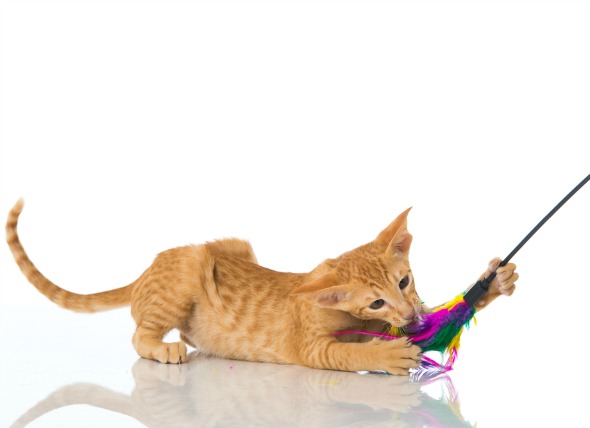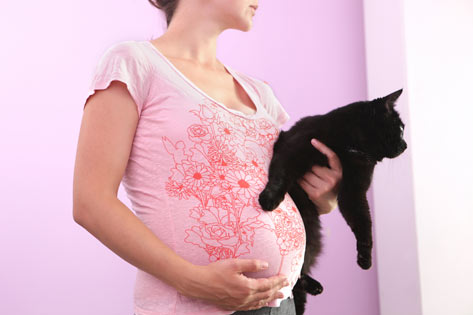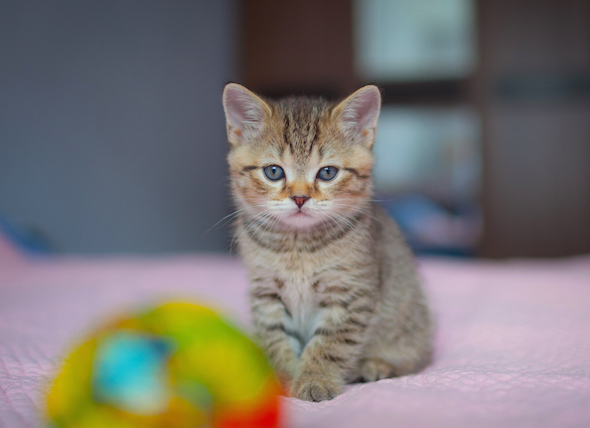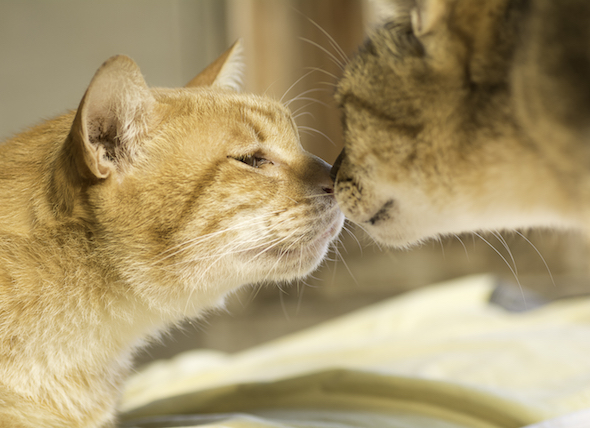
 Every cat owner has seen this, your cat is hungry, he weaves in and out of your legs, you return home from work, he rubs his cheek against your shin, headbutts you, rubs against a the sofa, or a corner. Why is he doing this?
Every cat owner has seen this, your cat is hungry, he weaves in and out of your legs, you return home from work, he rubs his cheek against your shin, headbutts you, rubs against a the sofa, or a corner. Why is he doing this?
All of this is is due to pheromones, a chemical produced by scent glands. Glands are found all over the body and relay different messages, but they are all a form of "scent communication". The facial glands are found on the lips, cheeks and forehead, and they trigger a sense of calm in cats. You will find your cat rubs against you or other objects when he is marking his territory (in a nice way), showing his affection for you. He is feeling happy, relaxed and at ease. When a cat butts you with his head it is known as "head bunting", when he does it with his lips, cheeks it is known as "allorubbing"? Head bunting is typically used on humans and other familiar animals, lip rubbing more for objects. I certainly witnessed this today when our cat was seriously headbutting the hand of a friend, but then moving over to a book and rubbing his lips on the book. He was happy, content and in a happy place. Not only do cats rub against the furniture, walls and you, but cats who like each other will often rub heads together. This is a sign of familiarity and comfort, they like each other and are happy.
You may also notice that cats will rub their head and body on objects they want to "re-scent". Maybe it is a new you have come back smelling of another cat, dog, house. Rubbing against you gets his scent back onto you.
Similar glands to the can also be found at the base of the tail, which explains why your cat will not only rub his head, but also his body on your legs or on the wall, sofa etc. Again, they're transferring these "feel good" pheromones onto you or the object which produces a sense of calm in the cat.
Pheromones also send messages to other members of the same species. For example, pheromones are secreted by the female in heat so that local tom cats know that she is in season and ready to mate.
They are also found in the urine and feces. This is why cats spray, it is used as a way to "mark" their territory or objects. Intact males are most likely to engage in spraying behaviour as they are considerably more territorial than desexed cats, but spraying can occur in all cats, especially under stress.
Scratching is another behaviour we humans despair at, but this too is method of feline communication. Glands are located between the toes and when he is scratching an object he transfers his scent onto it. Another way to mark his territory.
Nursing mothers secrete pheromones from around the nipple when they are nursing their kitten. This helps them to feel calm and secure and recognise the individual scent of their own mother (remember, kittens are born with their eyes closed so can't see for the first few weeks).
So in the cat there are four main types of pheromone.
The feel good pheromone found on the face of the cat and at the base of the tail.
The urine pheromone used to mark territories and boundaries.
The sex pheromone to let other cats know a female is in heat.
The pheromone that the mother cat secretes to help her kittens recognise her and make them feel happy and safe.
Rats and mice are said to dislike the scent of pheromones in cat urine, however when infected with toxoplasmosis, they overcome this fear and dislike.
Pheromones can be used to our advantage to help overcome unwanted behaviours such as scratching and spraying. As they produce a sense of calm and happiness in the cat, we can mock these feelings with the use of "man made or synthetic" pheromones such as Feliway. Stress is a major cause of unwanted behaviours such as inappropriate spraying, urination and scratching in cats. Common triggers include moving house, the addition of a new cat (or other family member), change in routine, new cat in the neighbourhood.
 Kitten Checklist: Getting off to a Great Start
Buying the Right Kitten Supplies
By Jessica Vogel
Kitten Checklist: Getting off to a Great Start
Buying the Right Kitten Supplies
By Jessica Vogel
 How to Tell if Your Online Cat Food Search is Accurate
By Cheryl Lock
These days
How to Tell if Your Online Cat Food Search is Accurate
By Cheryl Lock
These days
 Pregnancy and Cat Litter, Feces
Tips to Prevent Issues with Toxoplasmosis
&nbs
Pregnancy and Cat Litter, Feces
Tips to Prevent Issues with Toxoplasmosis
&nbs
 Cat Facts: How Long Are Cats In Heat
By Helen Anne Travis
With millio
Cat Facts: How Long Are Cats In Heat
By Helen Anne Travis
With millio
 How to Introduce Cats
By Lynne Miller
If your cat used
How to Introduce Cats
By Lynne Miller
If your cat used
Copyright © 2005-2016 Pet Information All Rights Reserved
Contact us: www162date@outlook.com